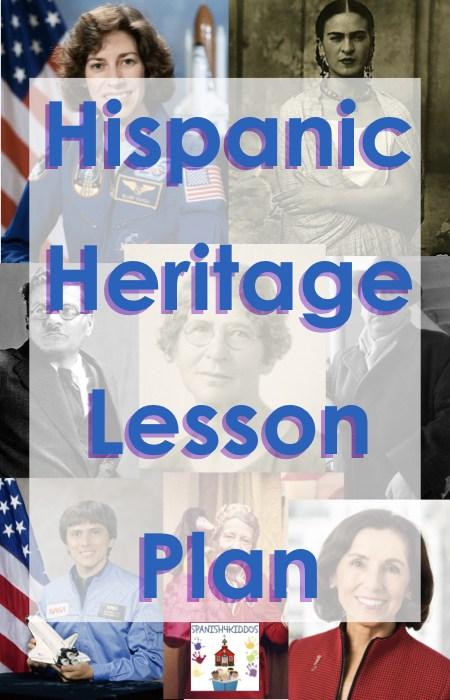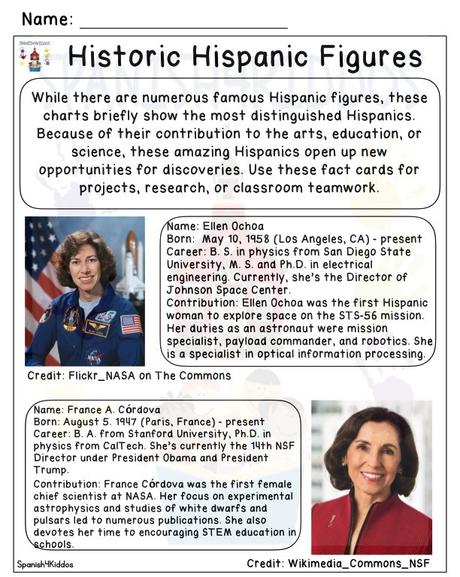A Hispanic heritage lesson plan introduces students to more than traditions. Hispanic heritage is an ideal way to add culture awareness to your lessons.
Many Hispanic figures contributed to the sciences, arts, literature, politics, and communities. That is why during September 15 until October 15, libraries and schools celebrate Hispanic Heritage Month.
The month pays tribute to those Hispanic people that made valuable contributions. Planning a lesson or class project can be overwhelming. There are many resources to help you.
However, depending on your instruction time, you might want to start a project, a research and writing assignment, or a one-day lesson. Whatever your goal, spend time to organize and plan the projects so that students succeed and have fun learning.
Hispanic Heritage Lesson Introduction
Many students might be unaware of Hispanic Heritage Month and its celebration. So, start with a brief introduction of the significance and rich history.
Use reliable resources to help you decide the reading material according to age group. Each resource may have more than one way of expressing the significance of the celebration of Hispanic Heritage Month. Also, take the time to clear any misconception about the month of celebration.
Many students confuse this month with the Day of the Dead (Día de Los Muertos) and Mexico's Independence Day. For instance, the Day of the Dead occurs between Halloween and the first days in November.
Unlike Hispanic Heritage Month, Mexico's Independence Day occurs on September 16, not a full month. However, other Latin American countries celebrate their Independence Day in September, too.
That is probably another reason people often associate this month to Hispanic heritage.
- Once you establish a concept of cultural relevance, ask students to jot down ideas about celebrating it.
- As you start your Hispanic Heritage lesson plan, incorporate graphic organizers or exit tickets to generate ideas.
- For example, a KWL chart is an ideal way to use prior knowledge from students.
- Use the KWL charts available from Spanish4Kiddos free library or create one your own.
- Also, you can use butcher paper and make a class KWL chart.
- After students offer ideas for each column, place the chart as a poster or anchor chart during the whole month.
What a useful way to add class collaboration and writing skills in a straightforward activity. Ideally, you want students to ask, investigate, and write about their findings. But how do you motivate them to look for answers?

Research Motivation for Young Learners
This Hispanic Heritage lesson plan is ideal for young learners in grade levels two to three. When you use informational text from various sources, students will be able to apply research skills.
With each step-by-step process, students collaborate with classmates. For many students, research and writing are the least favorite parts of learning.
That is why you need incentives for young learners to start and finish the project. When you pair the students in a group, they are more likely to complete the project.
Could you do this project in the classroom? Yes, you can.
Allow students to talk with each other about the research process and collaboration. Before starting with any class project, make sure to set guidelines.
- For instance, rubrics are excellent ways to let students know the assignment, grading policy, deadlines, and expectations.
- Even as young as third graders, they need to know assignment expectations to carry them to success.
- Also, knowing how groups will collaborate is an integral part of students' completion.
- Using graphic organizers to collect and write down ideas and facts are essential.
- Designate student tasks when creating a group of students.
- However, do allow that each student completes one set of the project by themselves.
- For instance, one student writes the introduction of a project while another student decides on images.
Determining how the groups work best in your classroom might be the most challenging task. You might choose that pairs work better than groups.
Projects like Hispanic Heritage Month celebrations serve well in class because students learn to collaborate. In each group or a couple of students, everyone brings the best of what they can do.
So, you might want to pair students that like to draw with students that prefer to write. Besides bringing the best in each student, you can also offer rewards to best projects, extra credit, free homework pass, or extra time on computers. The incentive depends, of course, on your class.
Hispanic Heritage Lesson Plan Strategies
Other strategies to use in your Hispanic heritage lesson plan are projects that students complete by themselves. For instance, you can use a biography worksheet of historic Hispanic figures to help students learn about achievements.
The best part of these printables is that each student can choose their Hispanic figure to research. Then, you can post students' work in the classroom or bulletin board, if you have one.
- Another strategy is to use information text for each Hispanic figure.
- Then, assign it to students or a pair of students.
- After they read the reading passage and write down the relevant facts on a graphic organizer, they transition to integrating ideas.
Compiling information and writing them down might be the easy part for some students. However, the integration of critical insights and presenting those concepts is not an easy task.
So, develop ways to help students express their ideas in different ways. One way is to use drawings or illustrations.

Many students are amazing artists. Allow students to use those artistic skills to show how much they understand.
- For other students, writing a paragraph might be more manageable.
- In that case, use writing prompts or templates to facilitate the transition of ideas to paper.
- Finally, use the Spanish4Kiddos Historic Hispanic Figures printables available for free.
- The free worksheets have relevant facts of famous Hispanic figures that accomplished remarkable odds.
- Use each biographical chart as a starting point for students to complete a writing assignment or a collaboration between students.
- Then, use pennant banners to display students' works around the classroom.
You can find more printables and templates in the Free Hispanic Culture section.
Developing Deeper Thinking Skills
A Hispanic heritage lesson plan unifies all areas of learning the Hispanic culture. From researching to reading and writing, a comprehensive lesson combines different parts of thinking.
Students, as they go through the process, develop more in-depth thinking skills. As soon as students begin to look for information and assimilate those concepts, learning patterns start to form.
The more frequent those learning patterns occur, the more accessible for students to capture that information. As a result, students begin to develop better study skills useful in upper grades.
The best part of project collaboration in class is the interchange of ideas between students. Much like a Socratic type of learning, discussions between peers allow ideas to flourish and new thinking to emerge.

